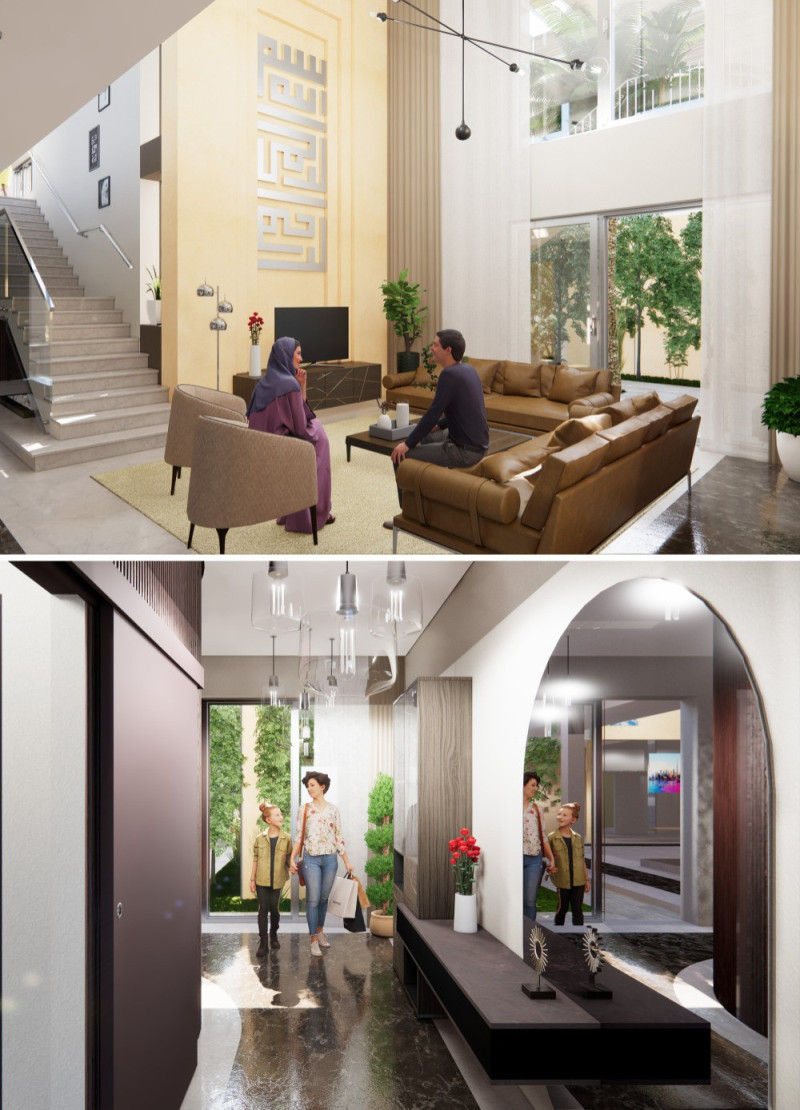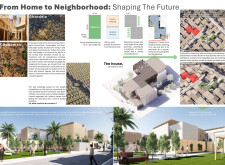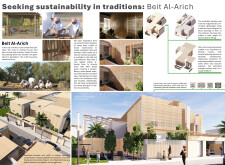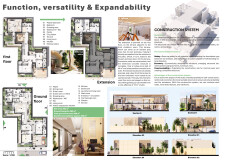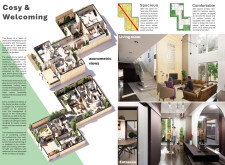5 key facts about this project
## Overview
Located in the arid regions of the United Arab Emirates, this residential design project seeks to create sustainable, efficient living spaces that respond to the specific challenges of desert climates. By integrating traditional Emirati architectural practices with contemporary design innovations, the project aims to improve the quality of life for inhabitants while fostering a robust sense of community. The intention is to develop homes that serve as functional nodes within a cohesive neighborhood, promoting both private living and public interaction.
## Structural and Spatial Strategy
The design adopts a multi-dimensional approach, utilizing plots of 15m by 30m to create homes with a total area of 450 square meters. The layout organizes spaces into two primary functions: family and guest areas, which enhances adaptability and encourages social engagement. The geometric form of the house comprises multiple sides, allowing for varied room configurations and the inclusion of numerous patios that maximize outdoor utility while minimizing the built footprint.
The floor plans span two levels, featuring designated rooms for living, dining, and outdoor terraces that facilitate interaction among residents. Careful attention has been paid to the organization of space to promote natural ventilation and daylighting, enhancing the overall user experience.
## Material Selection
A focus on sustainability informs the material choices throughout the design. Palm fronds are employed for ventilated roofs and facades, offering an eco-friendly shading solution that reduces heat transfer. Reinforced concrete serves as a durable material for load-bearing structures, capable of withstanding the severe environmental conditions of the region. Lightweight metal structures complement the design, providing necessary support while allowing for expansive openings in the walls.
These materials not only meet functional requirements but also reflect the rich architectural heritage of the UAE, merging traditional aesthetics with modern living standards. The integration of these resources underscores a commitment to reducing the environmental footprint while enhancing the well-being of future residents.


